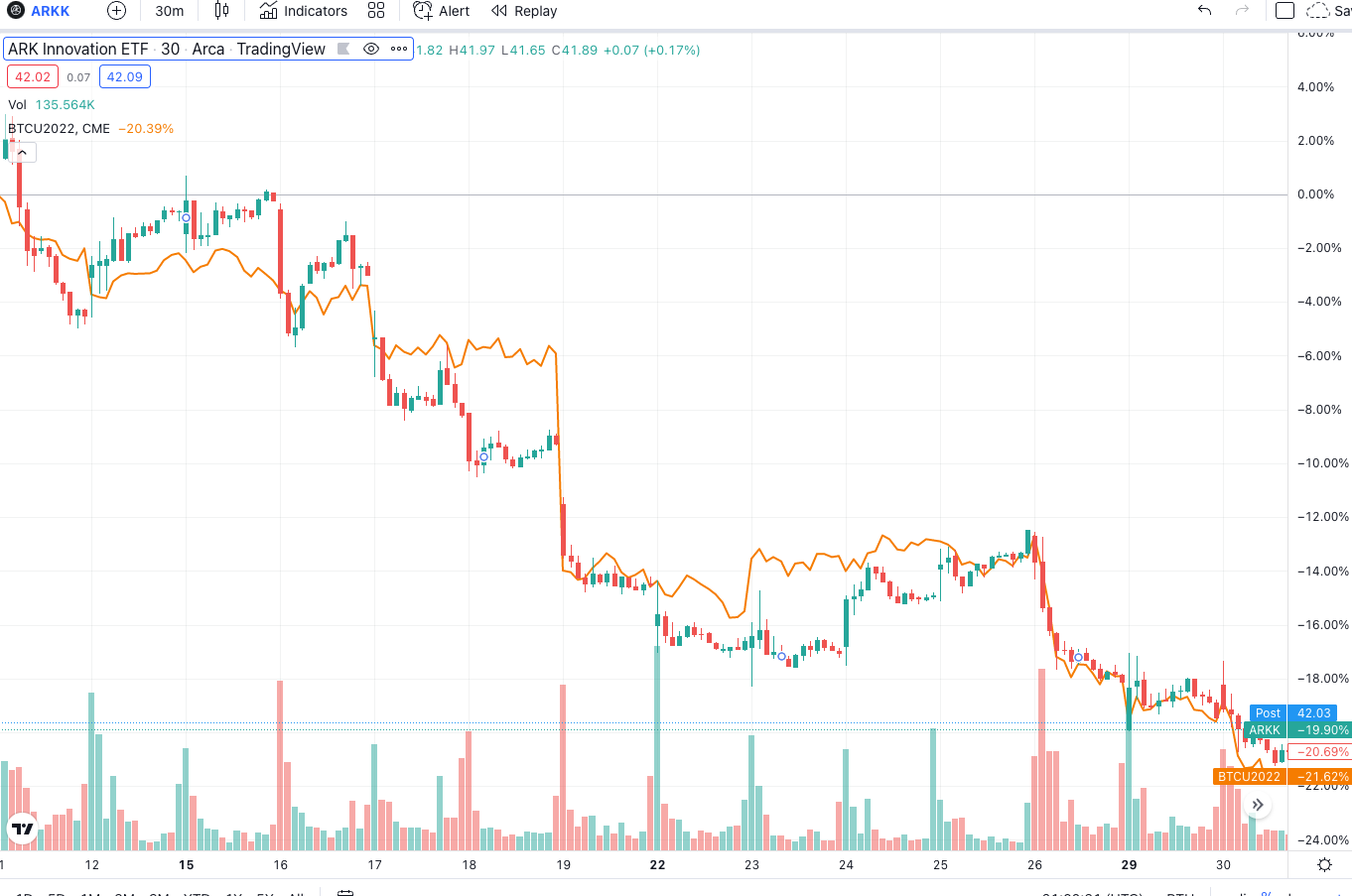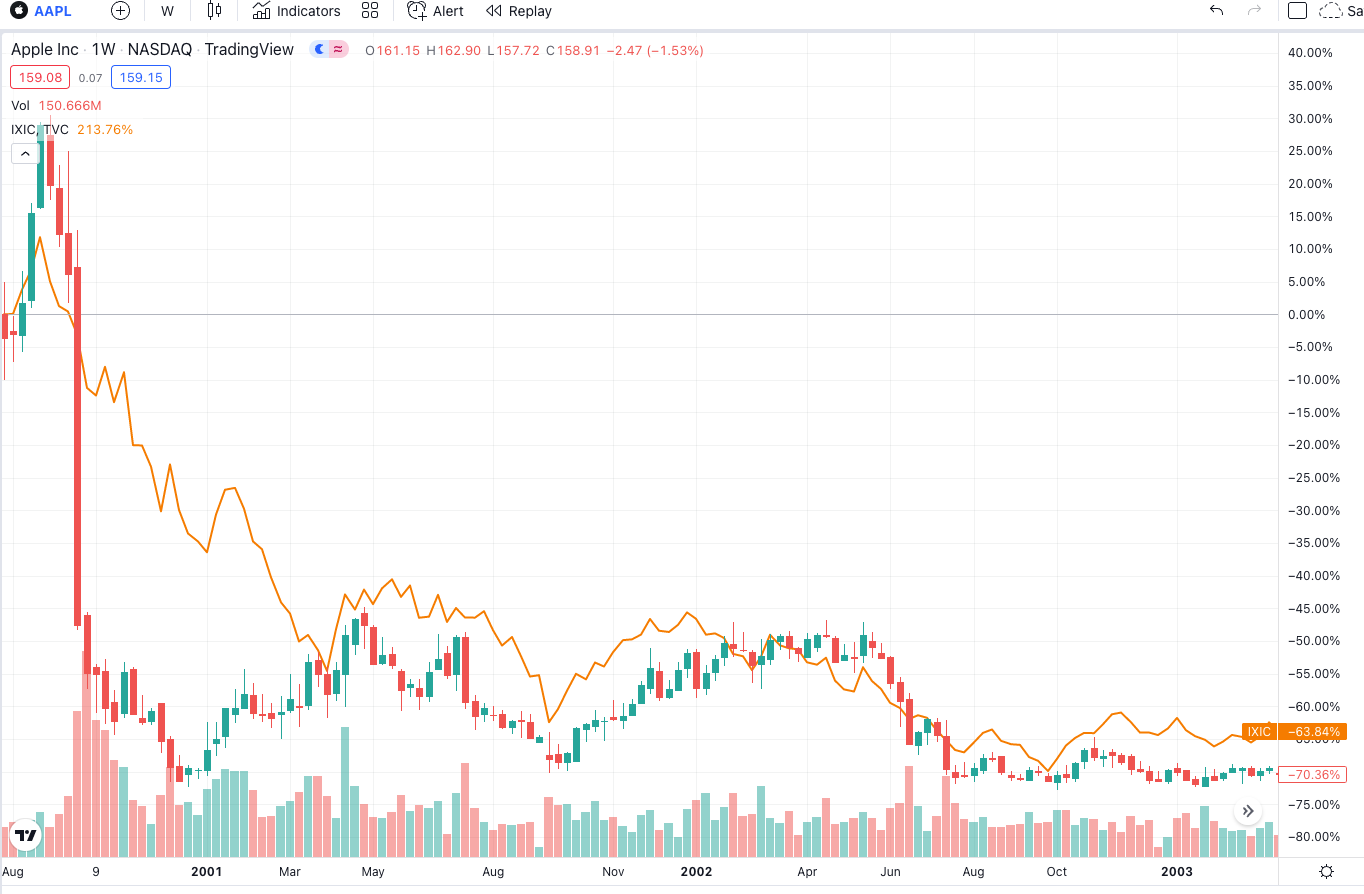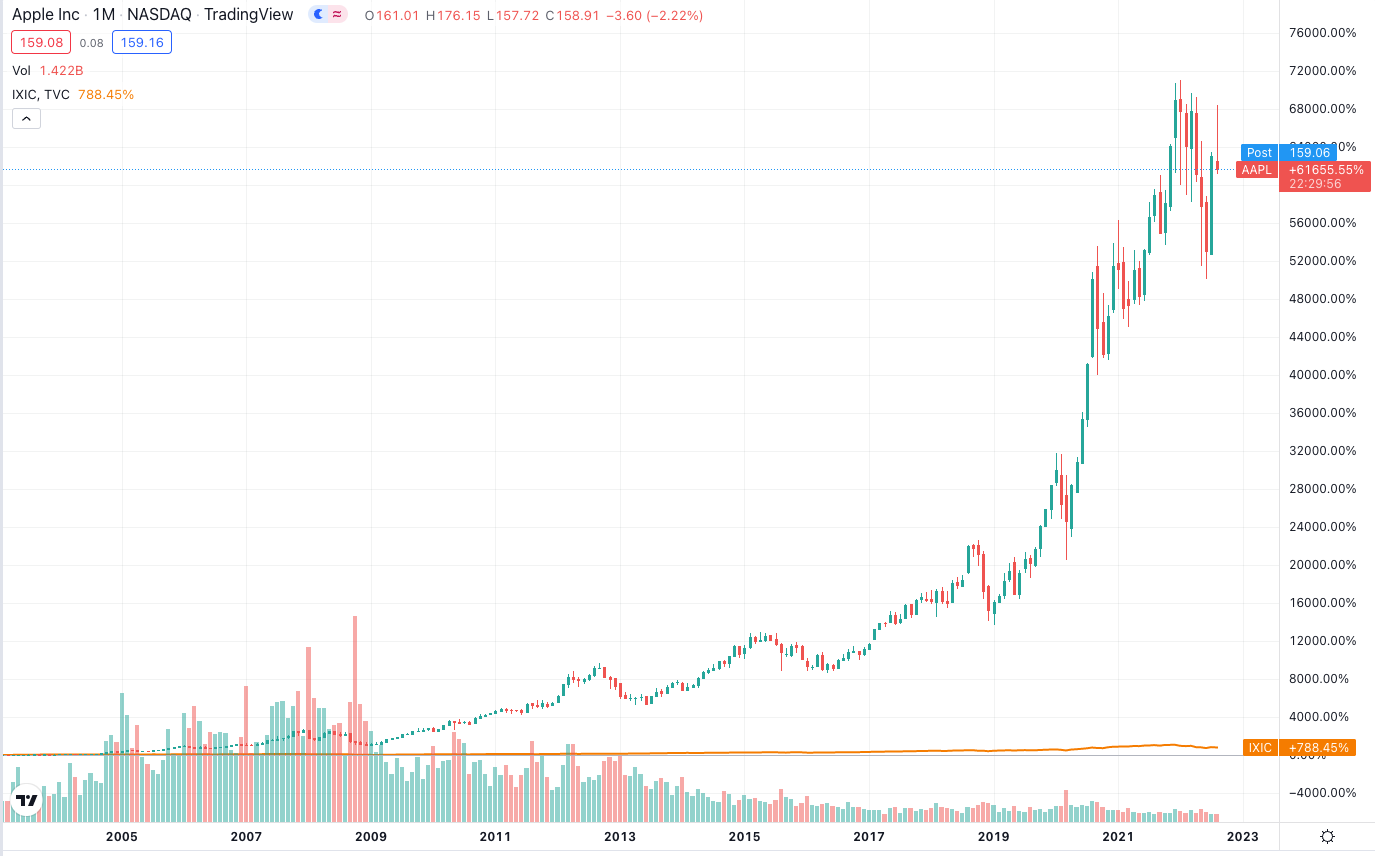Finding The Next Apple

You’ve got your ball
You’ve got your chain
Tied to me tight tie me up again
Who’s got their claws
In you my friend
Into your heart I’ll beat again – Dave Matthews Band
Let’s update our numbers on the sell-off since I sent out the “Top 5 Reasons For A Sell-Off” post 22 days ago. In the 22 days since I sent out the post called “Top 5 Reasons For A Market Sell-Off”, here’s an overview of the broader action in the markets and the updated numbers are in bold:
ARKK is down 19% (was 17% in the most recent note from 7 days ago and was 10% in the prior note from 12 days ago)
Bitcoin is down 20% (was down 12% and down 5%)
SMH is down 12% (was down 7% and flat)
Nasdaq is down 9% (was down 4.5% and up 1%)
S&P 500 and DJIA and Russell 2000 (small cap index) are down about 5% each (were down about 1.5% and up 2%).
Now, that’s a real sell-off, at least in the tech stocks and crypto worlds. This is what ARKK and bitcoin being down 20% over just a three week period chart looks like this:

A 20% decline from top to bottom is considered a “bear market” by most definitions. Seeing that happen over a span of 15 trading days might even be considered a crash. I’ve covered about half or more of my shorts in the hedge fund although I still have quite a few puts to help hedge further sell-offs, if we they come. But let’s talk economy, markets and most importantly, strategy…
In the last month or so as the market rallied hard off its early summer lows, many traders and pundits had decided that the Fed was going quickly to pivot from focusing on fighting inflation to supposedly suddenly start cutting rates to help prop up assets prices (again). That’s been the Fed playbook for the last few decades, right? “The Fed Put” they called it. But as I’ve been saying for the last year now since the Bubble-Blowing Bull Market popped that we are in a new paradigm.
The same playbook that we’ve been using for the market and Fed and economic cycles during my entire professional investing career was a paradigm that started somewhere in the mid 1990s as technology innovations and the wild productivity enhancements that enabled flowed through the economy keeping inflation low even as the Fed spent decades keeping rates far below natural levels. With the onset of the Covid and the trillions of dollars the the Republican Democrat Regime and their Federal Reserve pumped through the system, with China and Taiwan and Russia and Ukraine and so many other real threats to western prosperity, we entered a new paradigm. The Fed could cut anytime the markets went down as long as inflation was reported at 2-3% or less per year.
The Fed can’t cut anytime soon if inflation doesn’t get back down to those levels. Even though its great to see inflation in the US creep down from the nearly 10% levels it was running at a couple months ago, the Fed can’t declare victory at 6% inflation or at 5% or even at 4%. There’s no guarantee and in fact in might even be unlikely that inflation simply heads back down to the 2-3% levels it was at during the old paradigm. Inflation could drop down to 4% this month and then rebound back up to 6% next month and then down to 3% and then up to 7%. Inflation doesn’t always move in a steady manner.
Looking back at the beginning of the most recent economic cycle that we just lived through, the aforementioned Bubble-Blowing Bull Market that ended sometime last year, I remember when I started to turn bullish as the markets finished crashing in 2008. I can’t find the article any more (it’s been 15 years), but on the day the markets bottomed in 2008, I wrote an article called “Don’t panic now that we’re here” on Fox and Marketwatch and it outlined why I thought the US market was about to bottom and take off into a new Bubble. Here’s me explaining to Ron Paul and Peter Schiff (Alex Jones(!) might have called into the show that night too, now that I think about it) that the US economy was likely to boom again and the the stock markets were likely to enter what I was calling an Echo-Techo Bubble that would turn into a Bubble-Blowing Bull Market that could last for years, in large part because the Fed and the Republican Democrat Regime was about to print as much money as they wanted….without having to worry about inflation.

And see, that’s what’s so different in this cycle: Inflation isn’t just a threat here, it’s real and it’s global and it’s not stopping yet, much less getting down to 2%. Look, if the Fed needs to get inflation down to 2% and if rates around the globe keep climbing, the Fed’s not going to be talking about stopping Fed Fund rates at 4%. Fed Fund rates could get to 6% or 7% or higher before this cycle ends.
You don’t have to invest just based on these broad macro and market themes. The good news is that even in bear markets — especially in bear markets — you can find individual stocks that will go double and triple even as the markets drop 20% and even during recessions. You can find long-term buying opportunities in names that are about to change the world but are getting slammed by shortsided investors — Recall that I bought Apple in March 2003 and have owned it ever since. Here’s what Apple and the Nasdaq’s respective three-year charts looked like when I got the chance to buy Apple at $12 a share (split-adjusted 25 cents a share):

And here’s what Apple and Nasdaq’s respective charts have done since March 2003. That flat-looking orange line along the bottom is the Nasdaq’s chart which went up almost 800% since March 2003, which is pretty good performance. But not compared to Apple’s almost 62,000% return over the same time frame:

And I most certainly plan on finding us another Apple at 25 cents and another Google at $45 and another bitcoin at $100 and another few Revolutions that can go up 1000% or 10,000% or even more like some of our past picks did. Do I even remember that Apple was down 50% in a straight line during 2008’s sell-off? Or that it was down 40% during 2020’s Covid Crash? Yes, actually, I do. But the point is that we can’t time each and every move up and down in the markets with our portfolios. But we can find a few stocks that go up more than anybody ever thought they can.
The big money on Wall Street is made by investing in the stocks of great companies that change the world when prices, and thusly, valuations are down. I plan to keep doing that, focusing on the best companies in Space, Onshoring, Biotech and maybe in the metaverse and AI too. Stay tuned to what matters, not to the noise, but let the noise open up the opportunities to buy great stocks at better prices.




